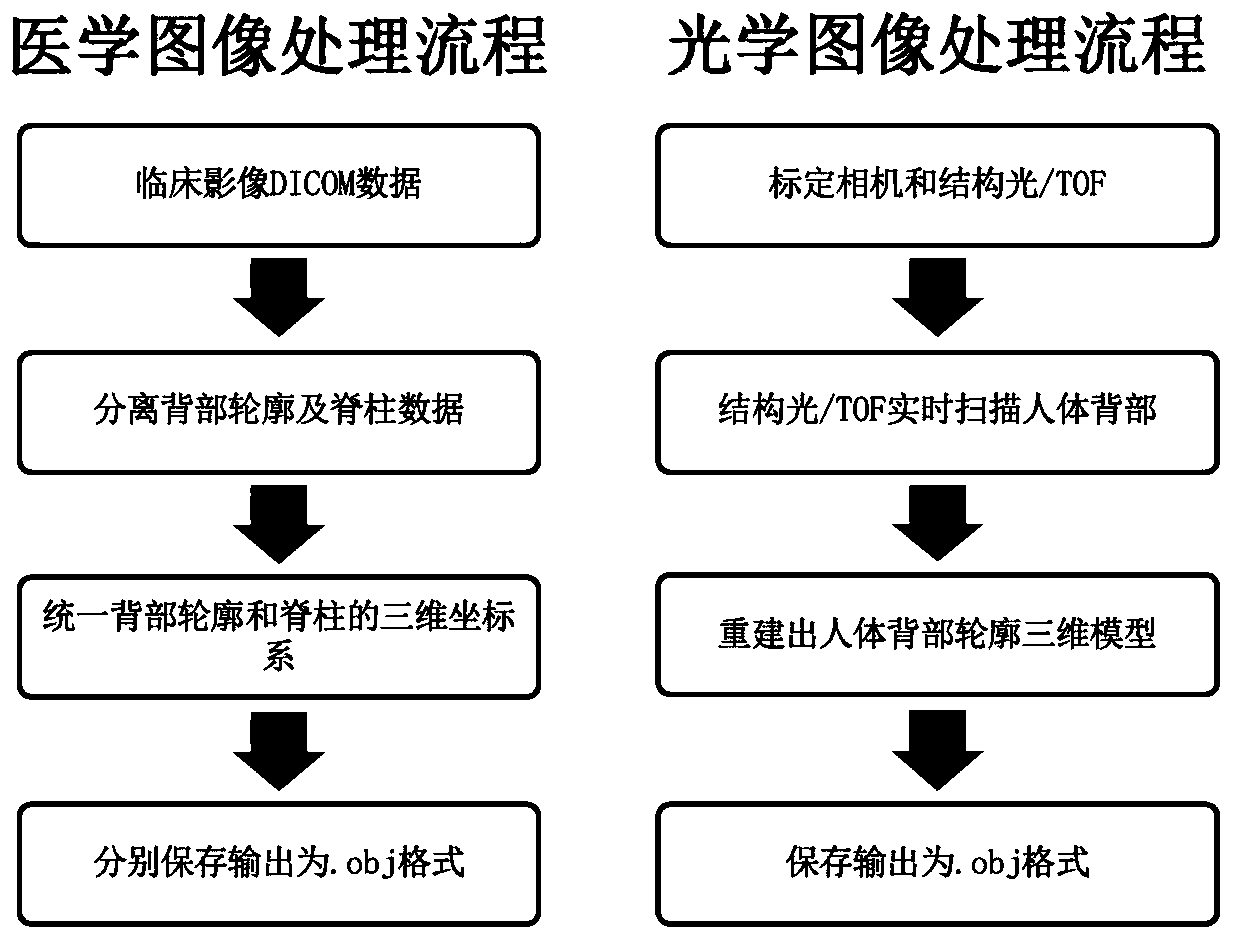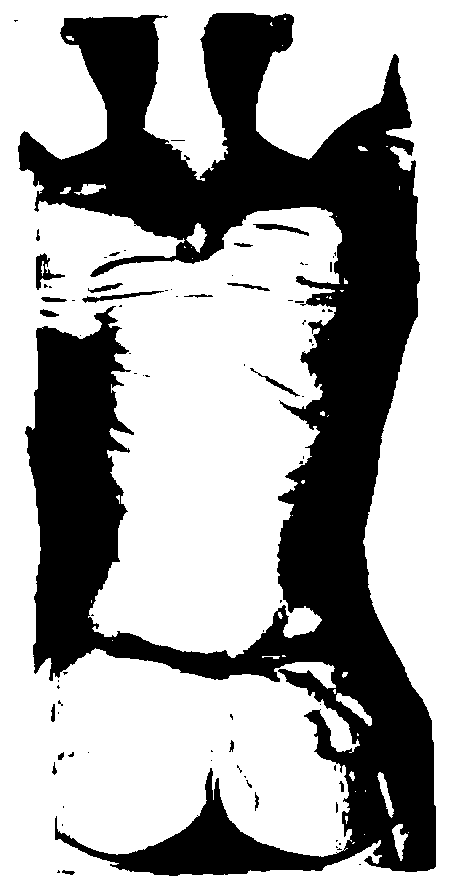Non-radiative percutaneous spine positioning method based on optical scanning automated outline segmentation matching
An optical scanning and contouring technology, applied in the fields of medical technology and computer image processing, can solve the problems of inability to achieve uniform size, no anatomical landmarks, inconsistent coordinate starting points, etc. The effect of cost consumables
- Summary
- Abstract
- Description
- Claims
- Application Information
AI Technical Summary
Problems solved by technology
Method used
Image
Examples
Embodiment Construction
[0050] The present invention will be further described below in conjunction with the accompanying drawings.
[0051] Such as figure 1 and 2 As shown, the process involved in the method of the present invention includes: a medical image processing process and an optical image processing process.
[0052] 1. Medical image processing flow:
[0053] 1.1: Obtain clinical image DICOMs data (taking CT as an example) and input it into the image processing system (3).
[0054] 1.2: Separate and extract the CT value of the human spine through a fixed CT threshold (Threshold) range. The threshold must meet the requirement of only displaying bone density (>400Hu) without any other tissue density. After extraction, the bone density is used to reconstruct the output A 3D model of the human spine and save it in .obj format.
[0055] 1.3: Separate and extract the CT value of the human body contour through a fixed CT threshold (Threshold) range, which must meet the requirements of not cont...
PUM
 Login to View More
Login to View More Abstract
Description
Claims
Application Information
 Login to View More
Login to View More - R&D
- Intellectual Property
- Life Sciences
- Materials
- Tech Scout
- Unparalleled Data Quality
- Higher Quality Content
- 60% Fewer Hallucinations
Browse by: Latest US Patents, China's latest patents, Technical Efficacy Thesaurus, Application Domain, Technology Topic, Popular Technical Reports.
© 2025 PatSnap. All rights reserved.Legal|Privacy policy|Modern Slavery Act Transparency Statement|Sitemap|About US| Contact US: help@patsnap.com



